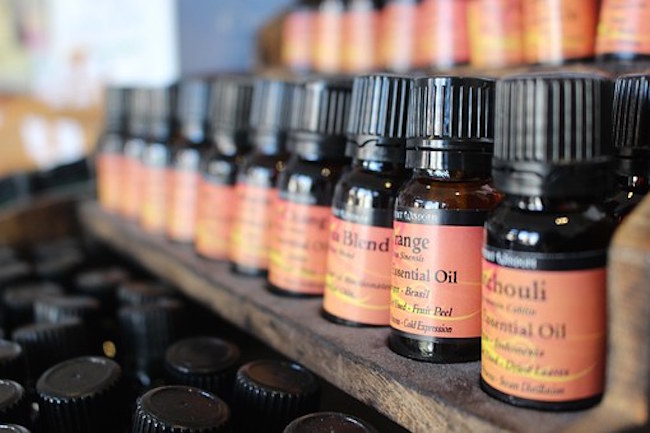How to make DIY survival pain relief salve using essential oils By Zoey Sky for Natural Cures
Knowing how to make effective home remedies is a key prepping skill, especially if you want to save money on supplies or avoid the use of store-bought medication that often contains harmful chemicals.
Detailed below are several guides on making a DIY version of Tiger Balm, a popular pain relief salve, using natural ingredients like essential oils and items you may already have at home, like petroleum jelly or beeswax. This DIY pain relief salve will help soothe sore muscles after a long day of working on your homestead.
(h/t to PrepperWebsite.com)
What is Tiger Balm, and how does it work?
Tiger Balm is a brand of store-bought topical pain medication. When applied on bare skin, the salve provides both a warming and cooling sensation.
Tiger Balm is made of different ingredients like essential oils, petroleum jelly and paraffin. Essential oils give Tiger Balm its distinctive smell and are also responsible for the product’s medicinal properties.
Unlike ibuprofen, Tylenol, or aspirin, essential oils are counter-irritants that overload your nerve endings with hot and cold sensations that override pain signals.
There are different Tiger Balm formulas made using a combination of these five ingredients:
- Cajeput oil (seven percent) – Cajeput has a heating effect on the skin. It’s a traditional remedy against rheumatism, and it also has stimulating and invigorating effects.
- Camphor oil (11-25 percent) – Camphor is one of the two active ingredients in Tiger Balm. It has both cooling and warming effects on your skin and also increases blood circulation.
- Cinnamon cassia oil (10 percent) – Cinnamon oil has anti-inflammatory and heating effects. The essential oil can also help relieve arthritis and other inflammatory pain.
- Clove oil (10 percent) – Clove oil stimulates the heat receptors and has analgesic qualities.
- Menthol or methyl salicylate (15 percent) – Menthol and methyl salicylate are made from mint extracts. These common anesthetics work by constricting your muscles to help decrease muscular and joint pain. These active ingredients can also help relieve colds and congestion when inhaled.
Before SHTF, stock up on these useful essential oils. These oils can also be used for other home remedies, making them an important part of your survival stockpile.
For example, clove oil can also be used to relieve a toothache. Clove oil is an antioxidant that’s also a natural analgesic, anti-inflammatory and anti-microbial.
Below are alternatives that you can use to replace the five essential oils needed to make a DIY pain relief salve similar to Tiger Balm.
Cooling oils
- Eucalyptus oil
- Sandalwood oil
- Tea tree oil
- Vetiver oil
Warming oils
- Black pepper oil
- Cardamom oil
- Chili seed or capsaicin oil
- Ginger oil
DIY pain relief salve with a mentholated topical ointment or petroleum jelly base
You can make DIY Tiger Balm using mentholated topical ointments like Vicks VaporRub and essential oils.
Mentholated topical ointments already contain essential oils, which provide a heating and cooling effect when applied to your skin.
Products like Vicks contain about 5 percent camphor, 3 percent menthol and 1–2 percent of eucalyptus oil. Turn mentholated topical ointments into DIY pain relief salve by adding a couple of drops of the oils it already contains and several drops of warming oils to complete the mixture.
Alternatively, you can use petroleum jelly as the base. But since petroleum jelly doesn’t contain essential oils, you need to add some to make a 50/50 mix of oils and petroleum jelly.
Use the percentages listed for the original Tiger Balm formulation to determine how much of each oil you need to add.
DIY pain relief salve with beeswax
If you prefer using natural ingredients instead of mentholated topical ointment or petroleum jelly, you can use beeswax to make the DIY pain relief salve.
You’ll still need to combine the essential oils and base of the salve in a 50/50 mixture.
Ingredients:
- Beeswax
- 1 Teaspoon of coconut oil
- Olive oil
- Cajeput oil
- Camphor oil
- Cinnamon cassia oil
- Clove oil
- Menthol or methyl salicylate
Steps:
- Start by warming a pot of water to a maximum of 150 F. Next, place a small glass jar into the water with one teaspoon of coconut oil and a few drops of olive oil.
- Add a few flakes of beeswax. Stir until all the wax has melted.
- Test the consistency of the mixture with a cold spoon. If the balm is too soft, add some more beeswax. If it’s too hard, add some more oil.
- Add the essential oils into the balm while it is still in the pot of water. Follow the percentages listed above as a guide and use alternatives if you don’t have any of the five essential oils for the original Tiger Balm formulation.
To use the Tiger Balm-inspired DIY pain relief salve, massage into sore skin for a soothing, cooling sensation.
Make DIY pain relief salve at home using natural ingredients like essential oils instead of buying Tiger Balm to save money on your survival supplies.




